Related Research Articles

Marsala is an Italian town located in the Province of Trapani in the westernmost part of Sicily. Marsala is the most populated town in its province and the fifth in Sicily.

Mazara del Vallo is a town and comune in the province of Trapani, southwestern Sicily, Italy. It lies mainly on the left bank at the mouth of the Mazaro river.
Aprus or Apros, also Apri or Aproi (Ἄπροι), was a town of ancient Thrace and, later, a Roman city established in the Roman province of Europa.
Irenopolis or Eirenoupolis was an ancient and medieval city in Roman and Byzantine era Isauria.
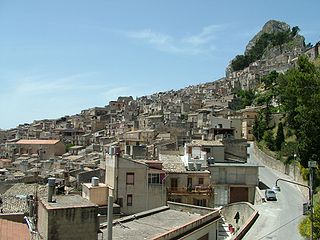
Caltabellotta is a comune (municipality) in the Province of Agrigento in the Italian region Sicily, located about 60 kilometres (37 mi) south of Palermo and about 45 kilometres (28 mi) northwest of Agrigento.

Olba or Olbe was an ancient city and bishopric in the Roman province of Isauria, in present-day southern Turkey. It is included in the Catholic Church's list of Latin titular sees.
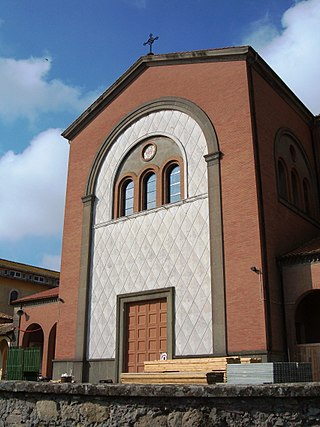
The Diocese of Porto–Santa Rufina is a suburbicarian diocese of the Diocese of Rome and a diocese of the Catholic Church in Italy. It was formed from the union of two dioceses. The diocese of Santa Rufina was also formerly known as Silva Candida.

The Italian Catholic Diocese of Mazara del Vallo is in far western Sicily. It is a suffragan of the Archdiocese of Palermo.

The Archdiocese of Siracusa, also known as Syracuse, is a Latin Church ecclesiastical territory or diocese of the Catholic Church in Sicily. It became an archdiocese in 1844. The current archbishop is Francesco Lomanto.

The Italian Catholic Diocese of Diano (Teggiano)–Policastro (Latin: Dioecesis Dianensis-Policastrensis), in Campania, has existed since 1850, under its present name since 1986. In that year the Diocese of Diano (Teggiano) was united with the diocese of Policastro.
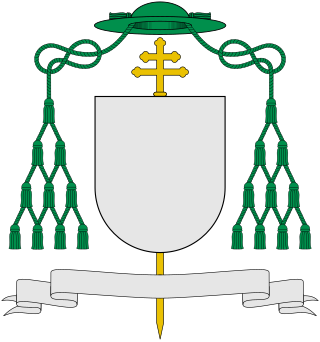
Giuseppe Leanza KC*HS was born in Cesarò, Italy. and ordained on 17 July 1966.
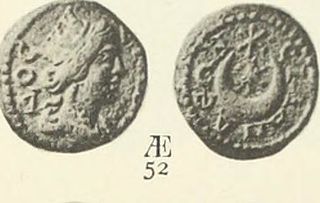
Silandus or Silandos was an episcopal city in the late Roman province of Lydia. It was near and gave its name to the present town of Selendi in Manisa Province, Turkey.
Caloe was a town in the Roman province of Asia. It is mentioned as Kaloe or Keloue in 3rd-century inscriptions; as Kalose in Hierocles's Synecdemos (660); and as Kalloe, Kaloe, and Kolone in Parthey's Notitiæ episcopatuum, in which it figures from the 6th to the 12fth or 13th century.
Drizipara or Druzipara, Drousipara, Drusipara, now Büyükkarıştıran in Lüleburgaz district, was a city and a residential episcopal see in the Roman province of Europa in the civil diocese of Thrace. It is now a titular see of the Catholic Church.

Justinianopolis in Armenia also known as Iustinianopolis was a Roman and Byzantine era city and bishopric in Lesser Armenia. It has been identified with modern Sivrihisar, Eskişehir Province Central Anatolia, Turkey. It was one of several ancient sites renamed in late Antiquity after Byzantine emperor Justinian I. The city also known as Acilisene and Keltzene.
The Stauropolis is the former metropolitan see of Caria in Asia Minor within the Patriarchate of Constantinople. It remains a titular see of the Roman Catholic Church.
The Diocese of Cephas is a suppressed seat in the Catholic Church. The official title is Titular Episcopal See of Cephas.
Alessandro Caputo was Bishop of Mazara del Vallo from 21 May 1731 – 24 Feb 1741.
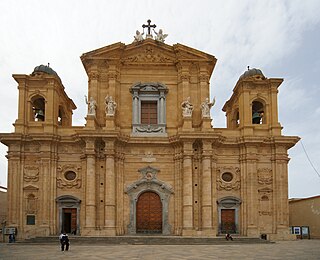
Marsala Cathedral is the largest church in the town of Marsala, Sicily, and the Diocese of Mazara del Vallo. Its facade faces onto piazza della Repubblica and the nearby via Giuseppe Garibaldi. It is dedicated to the Anglo-Norman saint Thomas Becket, whose cult was introduced to Sicily via its close relations with England under William I and William II – the latter even married Henry II of England's daughter Joan, who also supported Thomas' cult despite Henry's part in triggering his death.
The Diocese of Oea is a suppressed and titular See of the Roman Catholic Church.
References
- ↑ (in German) Heinrich Gelzer, Ungedruckte und ungenügend veröffentlichte Texte der Notitiae episcopatuum, in: Abhandlungen der philosophisch-historische classe der bayerische Akademie der Wissenschaften, 1901, p. 554, nº 269.